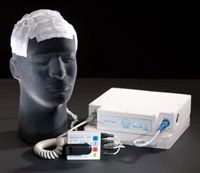Article
FDA Approves Novel Device to Treat Brain Cancer
Author(s):
The FDA has approved a novel device that uses electric fields to treat aggressive brain tumors

The FDA has approved the NovoTTF-100A System (NovoTTF), a novel device that uses electric fields to treat aggressive brain tumors. The approval follows an FDA panel’s recent 7 to 3 (2 abstentions) vote backing the medical instrument.
NovoTTF is indicated for patients with recurrent or progressing glioblastoma multiforme after the failure of initial treatment.
“Recurrent glioblastoma multiforme is a devastating form of brain cancer that often eludes standard treatments,” said Jeffrey Shuren, MD, JD, director of the FDA’s Center for Devices and Radiological Health, in a press release. “The agency’s approval of the NovoTTF-100A System shows the FDA’s commitment to innovative new devices that provide patients with other treatment options,” he added.
NovoTTF has a unique mechanism of action that offers an alternative to the standard glioblastoma treatments of surgery, radiation, and chemotherapy. The device disrupts brain cancer cell growth by delivering a low-intensity, alternating electric field through the scalp to the tumor site. The 6-pound, portable device consists of insulated electrodes that connect to an electricity generator. Patients self-administer the treatment throughout the day.

The FDA based its approval of NovoTTF on a phase III randomized study of 237 patients with glioblastoma who had tumor progression or recurrence after standard treatment. According to manufacturer NovoCure, progression-free survival rates at 6 months for patients randomized to NovoTTF compared with the standard chemotherapy cohort were 21% versus 15%, respectively. Additionally, tumor response rates for the NovoTTF group were 14% versus 10% in the placebo cohort. Overall survival rates were similar between the 2 groups.
Although the benefits for NovoTTF and standard treatment were comparable, patients in the NovoTTF cohort avoided the intense side effects associated with chemotherapy, including nausea, anemia, fatigue, and serious infections. As a result, patients treated with NovoTTF reported an improved quality of life versus those receiving standard chemotherapy.
The FDA noted that neurological side effects, such as convulsions and headaches, occurred slightly more frequently in patients treated with NovoTTF. The device’s most common side effect was that patients developed a rash on the skin where the treatment was applied.








